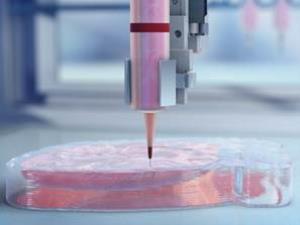Existing methods of 3D printing of human tissues and organs have one significant drawback – the process takes a lot of time. So, only a few millimeters are printed per second, which is a big problem for cell survival. Scientists from the Vienna University of Technology have developed a new technique that can significantly reduce printing time.
The new high-resolution bioprinting process requires special “bio-ink” with cells that can be embedded in three-dimensional frames printed to the nearest micrometer. According to scientists, the basis of their 3D printing method is the two-photon polymerization method, suitable for creating ultra-thin three-dimensional structures with high accuracy.


